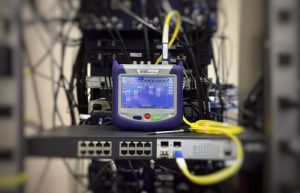Intel will use GPUs to improve virus scanning, system performance and battery life
Intel Corp. and Microsoft Corp. are planning to use the graphics processing power of computer systems to sniff out malware.
Intel said Monday that its new Threat Detection Technology has been designed to make use of security features at the silicon level to root out threats. The technology was introduced at the RSA Security Conference alongside a second new cybersecurity product called Intel Security Essentials.
The chipmaker’s TDT product is said to function and use telemetry data at the hardware level in order to scan systems and improve the detection of malware and other threats. TDT can enable better security not only for today’s systems but also for emerging technologies such as the “internet of things” and blockchain, Intel said.
There are two aspects to TDT that should help enterprises to “detect new classes of threats,” including Accelerated Memory Scanning, which uses graphics processing units to handle the scanning process instead of central processing units. Intel reckons this not only improves the scanning but also means better performance and power efficiency as it frees up central processing unit resources.
Intel’s tests show that CPU usage during security scans fell from 20 percent to just 2 percent. “GPUs are very good at parallel processing on smaller chunks of data and this exactly what is involved in memory scanning,” said Patrick Moorhead, president and principal analyst at Moor Insights & Strategy.
The Accelerated Memory Scanning feature has already attracted the attention of Microsoft, which says it will use it alongside its Defender Advanced Threat Protection antivirus product.
TDT’s second element is something called Intel Advanced Platform Telemetry, which is said to combine platform telemetry data with machine learning algorithms. The idea is that introducing machine learning can help to “improve the detection of advanced threats, while reducing false positives and minimizing performance impact,” Intel said.
This second capability has caught the attention of another big technology firm, Cisco Systems Inc. The networking giant said it’s planning to integrated Advanced Platform Telemetry with its cloud and data center security platform Cisco Tetration.
As for Intel Security Essentials, this is a toolkit that bundles root-of-trust hardware protection with the company’s Core, Xeon and Atom computer processing chips. It’s intended to provide better security for boot systems, encryption keys and trusted execution enclaves, the company said.
“Further, these capabilities, directly integrated into Intel silicon, are designed to improve the security posture of computing, lower the cost of deploying security solutions and minimize the impact of security on performance,” Intel said.
Image: Intel
A message from John Furrier, co-founder of SiliconANGLE:
Support our mission to keep content open and free by engaging with theCUBE community. Join theCUBE’s Alumni Trust Network, where technology leaders connect, share intelligence and create opportunities.
- 15M+ viewers of theCUBE videos, powering conversations across AI, cloud, cybersecurity and more
- 11.4k+ theCUBE alumni — Connect with more than 11,400 tech and business leaders shaping the future through a unique trusted-based network.
Founded by tech visionaries John Furrier and Dave Vellante, SiliconANGLE Media has built a dynamic ecosystem of industry-leading digital media brands that reach 15+ million elite tech professionals. Our new proprietary theCUBE AI Video Cloud is breaking ground in audience interaction, leveraging theCUBEai.com neural network to help technology companies make data-driven decisions and stay at the forefront of industry conversations.

















